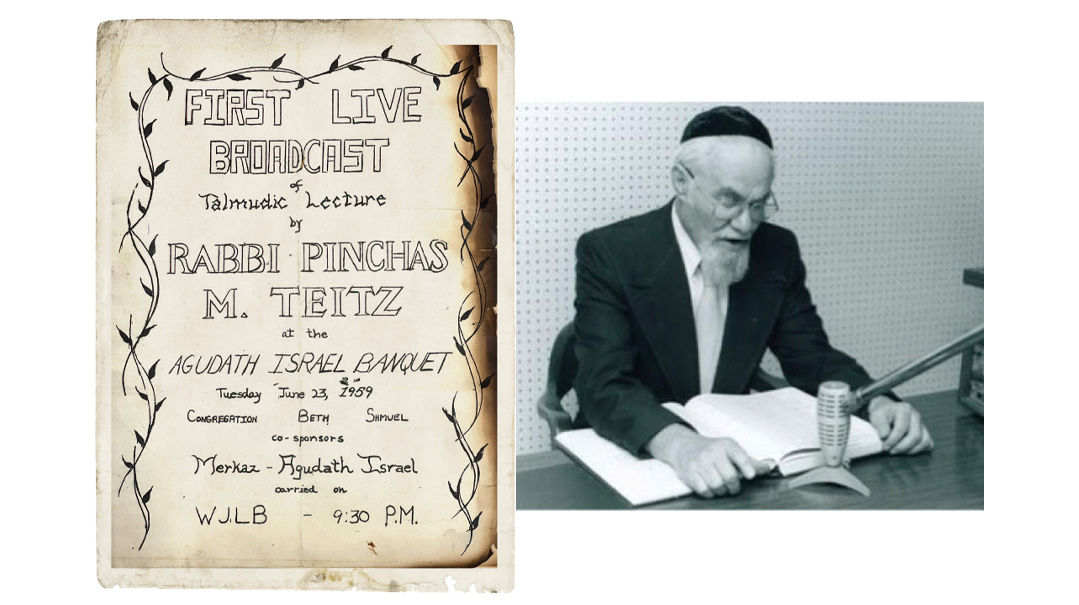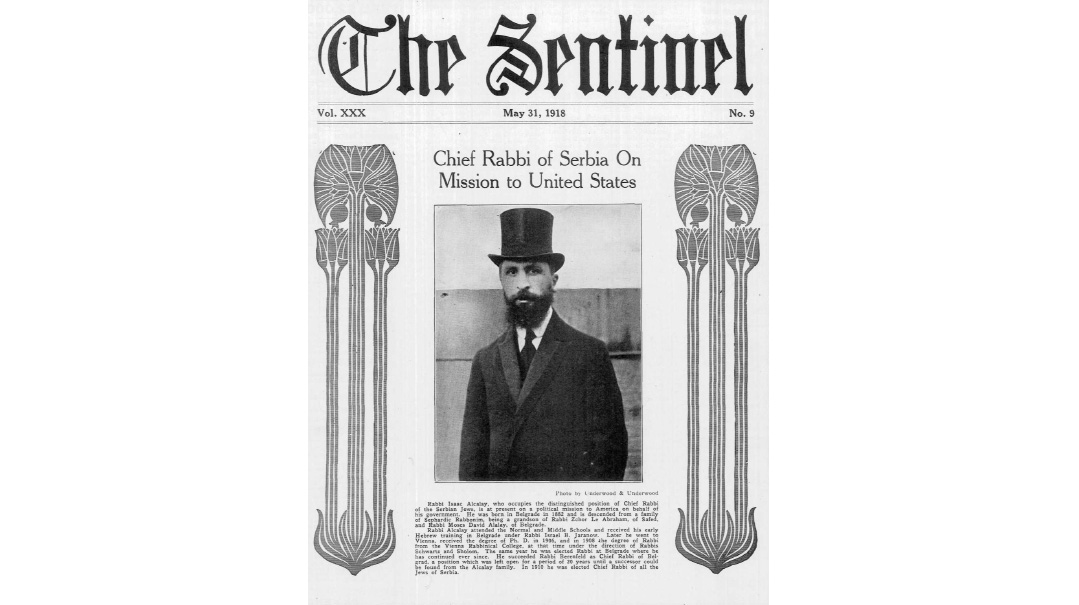“Lomir Lernen a Blatt Gemara”
| June 7, 2022Rav Teitz launched the first-ever radio broadcast of a Gemara class in the mamme loshen

Title: “Lomir Lernen a Blatt Gemara”
Location: Elizabeth, New Jersey
Document: Daf Hashavua announcement sign
Time: 1959
INour age, it hardly seems novel to use modern technology to study and disseminate Torah: From Dial-a-Daf to the All Daf app, from Torah Tapes to YU Torah, Jews have every conceivable medium available.
But all these efforts stand on the shoulders of the pioneers who came before. And one of the first initiatives was the Daf Hashavua radio show produced by Rav Pinchas Mordechai Teitz, the rabbi of Elizabeth, New Jersey. Commencing in 1953 and continuing for 36 years, Rav Teitz would broadcast a weekly Gemara shiur, from after Succos until before Shavuos, at 9:30 p.m. Motzaei Shabbos. At its peak, it was estimated that the live broadcast and syndicated recordings had nearly 200,000 listeners.
Rav Pinchas Mordechai Teitz (1908–1995) was born into a prestigious rabbinic family in Subate, Latvia. His great uncle was the Aderes, and when the family fled during World War I, they took refuge with his uncle Rav Eliyahu Akiva Rabinowitz, the rabbi of Poltava and a dynamic leader in Russia. Pinchas subsequently studied in Ponevezh, Riga, and Slabodka. His six years in Slabodka left a lasting impression on him, and he became a close student of Rav Yosef Zusmanovich (the Yerushalmi). He spent nearly a year in Dvinsk in close proximity to the Rogatchover Gaon, Rav Yosef Rosen, and emerged as a communal activist in Latvia, involving himself with Agudas Yisrael and establishing chadarim across the countryside.
In 1933–34, while accompanying Rav Eliyahu Meir Bloch on a fundraising mission to the United States on behalf of Telz Yeshiva, he was introduced to Basya Preil, daughter of the late rabbi of Elizabeth, Rav Elazar Meir Preil, who had stipulated in his will that whoever took his daughter’s hand would inherit the rabbinate. Rav Teitz remained at the helm for six decades, transforming the community. With a keen sense of perception of the needs of American Jewry, he invested his energies in building the vast educational infrastructure of the Jewish Educational Center (JEC), with the motto he coined — “Love Torah, learn Torah, live Torah” — as its modus operandi.
But his most widely known project at the time was Daf Hashavua. In an effort to reach Yiddish-speaking Jewish immigrants who had become estranged from their heritage, Rav Teitz launched the first-ever radio broadcast of a Gemara class in the mamme loshen. Such use of modern technology to teach Torah was quite a novelty in the 1950s, and some voiced their opposition. Yet the Lubavitcher Rebbe, Rav Yechiel Yaakov Weinberg (the Seridei Aish), Rav Yitzchak Isaac Herzog, Rav Aharon Kotler, Rav Moshe Feinstein, and the Ponevezher Rav all expressed their support for the initiative, with the latter three attending the first annual Daf Hashavua celebration.
Recordings of the shiurim were broadcast on local stations in cities across the country, and the Jewish Agency’s shortwave radio program Kol Zion Bagolah broadcast them behind the Iron Curtain. As radio was the dominant medium of that era, Rav Teitz’s shiurim left an outsized impact on the rise of both Talmudic study and Daf Yomi, and blazed the trail for the dissemination of Torah knowledge via technology. His goal was always to empower every Jew with Torah knowledge, which would invariably lead to a greater level of commitment.
A Shtickel Radio
The station Rabbi Teitz wisely chose for the broadcast was WEVD. A socialist station launched in 1927, its call sign was the initials of socialist leader Eugene V. Debs. As the Jewish immigrant, urban working class were prominent in socialist circles at the time, many Jewish labor leaders were involved with WEVD. In 1938 the station was bought by the Yiddish newspaper Forverts and its legendary head Abe Cahan. It emerged as the broadcast arm of the paper, and became the first major radio station to air Yiddish language programming. Rav Teitz therefore felt that WEVD would be best suited for his goals of reaching that demographic to share the light of Torah.
Covert Operative
In 1964 Rav Teitz made the first of what would be 22 visits to the Soviet Union, in order to reach out to Jews there and teach Yiddishkeit, even publishing and distributing pamphlets containing many of the basics of Jewish life. Believing that operating surreptitiously would yield better results, most weren’t even aware of his heroic activities on behalf of Soviet Jewry until years later.
(Originally featured in Mishpacha, Issue 914)
Oops! We could not locate your form.







